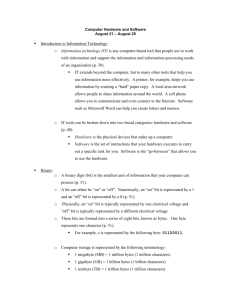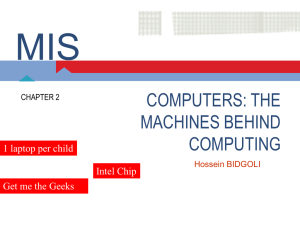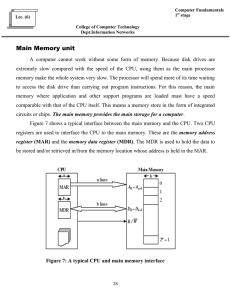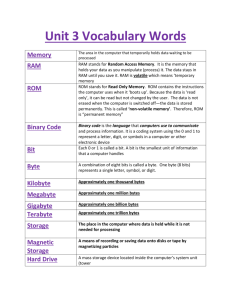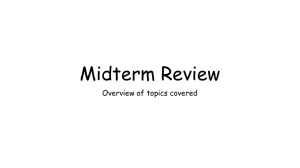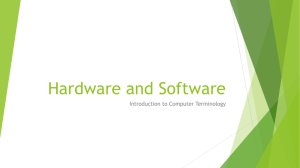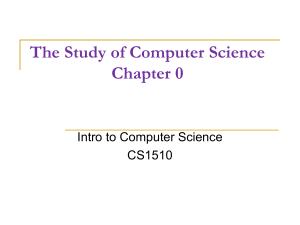Formatting Cells - Information Technology Services
advertisement
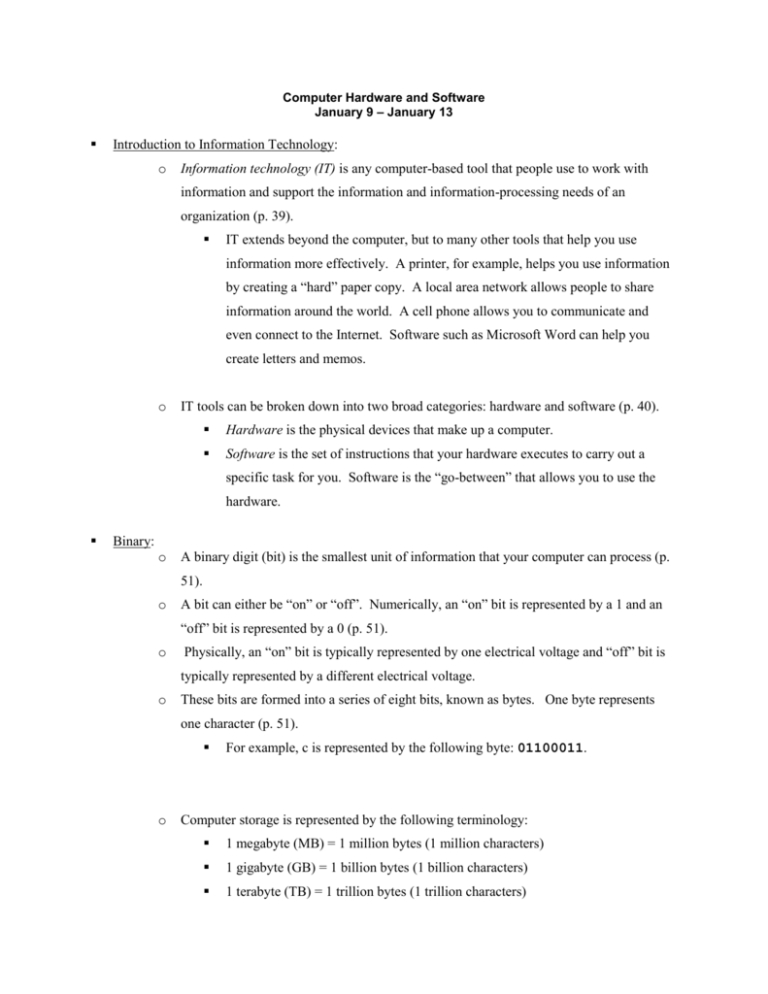
Computer Hardware and Software January 9 – January 13 Introduction to Information Technology: o Information technology (IT) is any computer-based tool that people use to work with information and support the information and information-processing needs of an organization (p. 39). IT extends beyond the computer, but to many other tools that help you use information more effectively. A printer, for example, helps you use information by creating a “hard” paper copy. A local area network allows people to share information around the world. A cell phone allows you to communicate and even connect to the Internet. Software such as Microsoft Word can help you create letters and memos. o IT tools can be broken down into two broad categories: hardware and software (p. 40). Hardware is the physical devices that make up a computer. Software is the set of instructions that your hardware executes to carry out a specific task for you. Software is the “go-between” that allows you to use the hardware. Binary: o A binary digit (bit) is the smallest unit of information that your computer can process (p. 51). o A bit can either be “on” or “off”. Numerically, an “on” bit is represented by a 1 and an “off” bit is represented by a 0 (p. 51). o Physically, an “on” bit is typically represented by one electrical voltage and “off” bit is typically represented by a different electrical voltage. o These bits are formed into a series of eight bits, known as bytes. One byte represents one character (p. 51). o For example, c is represented by the following byte: 01100011. Computer storage is represented by the following terminology: 1 megabyte (MB) = 1 million bytes (1 million characters) 1 gigabyte (GB) = 1 billion bytes (1 billion characters) 1 terabyte (TB) = 1 trillion bytes (1 trillion characters) Hardware: o Hardware can be broken down into six categories (p. 41). o Input device Output device Storage device Central processing unit (CPU) Telecommunications device Connecting devices An input device is a tool that you use to provide information and commands. Examples include the keyboard, microphone, mouse, scanner, point-of-sale (POS), etc. (pp. 52-53). o An output device is a tool that allows you to see or hear the results of your information processing requests. o Examples include monitors, printers, and speakers (pp. 54-56). A storage device is a tool that allows you to store information for use at a later time (pp. 52-53). These storage devices are permanent. These storage devices are usually either magnetic surfaces or surfaces that reflect light (a.k.a. optical). These devices are usually quite slow. Common storage devices include: Device Floppy disk Hard disk drive CD-ROM drive DVD-ROM drive o Type Magnetic Magnetic Optical Optical Size 1.44 MB Up to 100 GB 650-800 MB 4.2-17 GB The central processing unit (CPU) is the actual hardware that interprets and executes the software instructions and coordinates how all the other hardware devices work together (p. 59). Basically, the CPU is the “brain” of the computer. The CPU works closely with random access memory (RAM). RAM is temporary storage that stores data that the CPU is about to use. RAM is quick and electrical (p. 58). o A telecommunications device is a tool you use to send information to and receive it from another person or location. o The common telecommunications device is the modem (p. 60). Connecting devices enable hardware devices, particularly those outside the computer, with the computer. Software: o o There are two main types of software: application and system (p. 43). Application software is the software you use to meet specific information-processing needs. Examples include Microsoft Word, Internet Explorer, and Adobe Photoshop, etc. (p. 45). Application software is broken into two categories: personal productivity software and vertical and horizontal market software. Personal productivity software is used to help individuals and includes things like word processing or photo editing (p. 45). Vertical and horizontal market software is used to help entire companies, and includes things like inventory management software (pp. 46-47) o System software is the category of software that controls how your various hardware devices work together as you use your application software to perform specific information-processing tasks (p. 42). The most popular type of system software is the operating system. The operating system controls your application software and manages your hardware (p. 42). Utility software adds functionality to the OS. Examples include antivirus software, backup software, disk optimization software, etc (p. 42).
